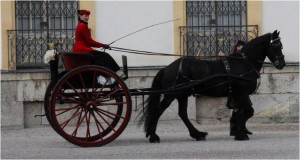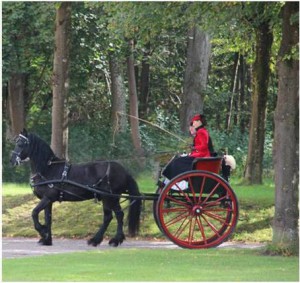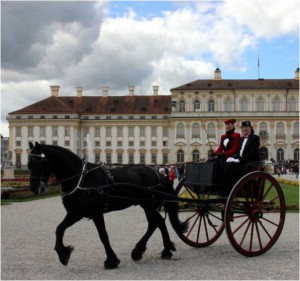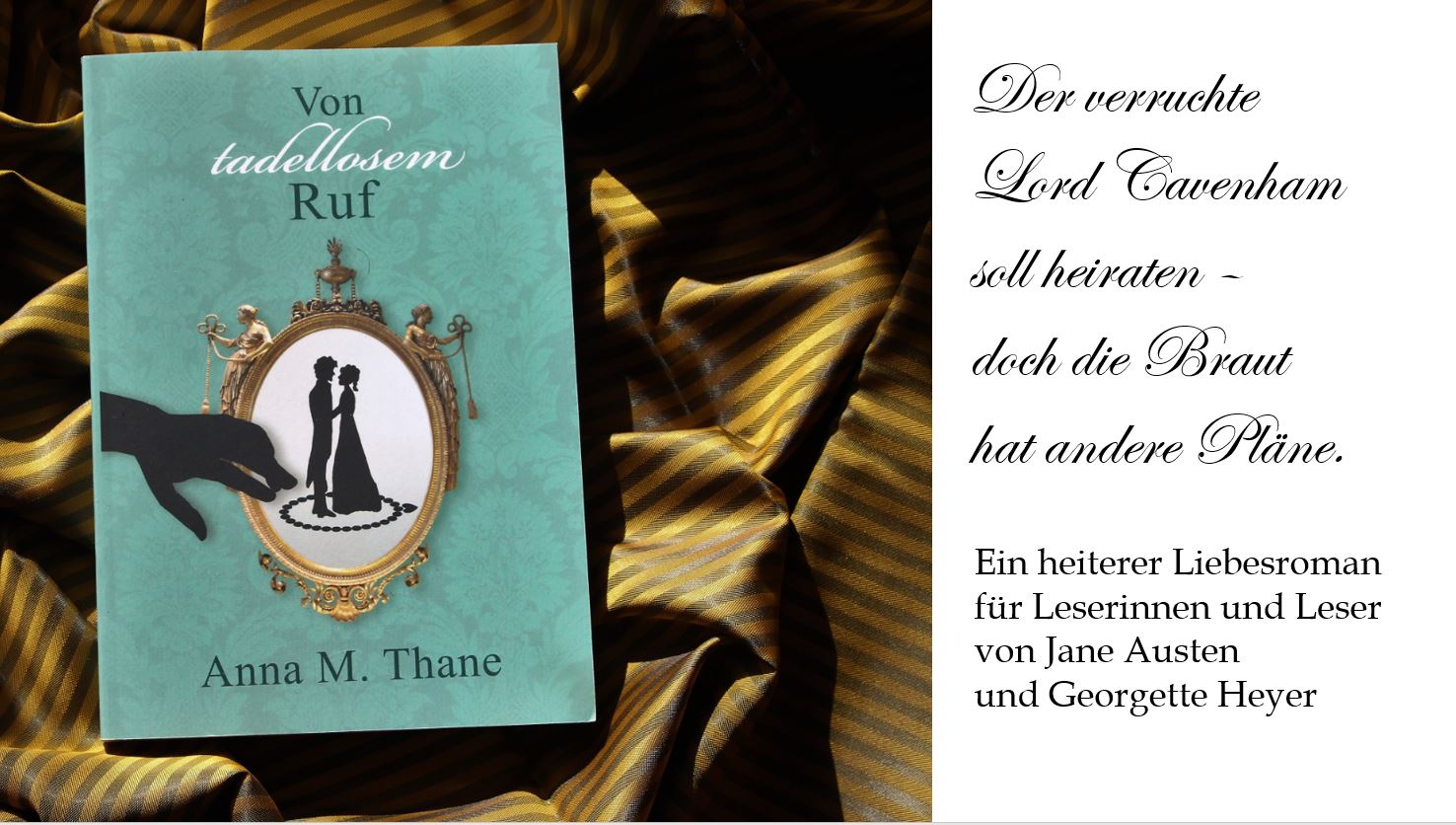 At a historical hunting and carriage show, a vehicle caught my eye: It featured a high seat for two persons, large wheels and shafts with an upward reverse curve. There was an air of elegance and sportiness about it, and it was driven by a lady.
At a historical hunting and carriage show, a vehicle caught my eye: It featured a high seat for two persons, large wheels and shafts with an upward reverse curve. There was an air of elegance and sportiness about it, and it was driven by a lady.
I had to check it out.
The vehicle turned out to be a Stanhope gig – a treat for every Regency Enthusiast! The Stanhope gig is a true brainchild of the Regency period:
- It was invented by an amateur ‘whip’ and engineer
- It combined manoeuvrability and style
- It used state-of-the-art-technology of the age to improve the performance
The designer of the gig was Captain Hon. Henry Fitzroy Stanhope. Carriage builder J. Tilbury made the first model of the vehicle in 1816.
Special features for a smart gig
 The special features of the Stanhope gig were:
The special features of the Stanhope gig were:
- the shafts, stiffened by a steel plate throughout their length
- the so called ‘Stanhope springs’
The stiffened shafts were attached to the axle by two turned pillars at each side, thus allowing improved manoeuvrability. The springs were a combination of two side- and two cross-springs, making driving more comfortable.
Based on this vehicle, Captain Stanhope later developed the Stanhope phaeton, a slightly larger carriage.
A vehicle for fashionable members of the ton
 The Stanhope gig was acclaimed for its manoeuvrability and style. It became one of the preferred vehicles of sportive and fashionable members of the ton. The gig’s popularity was probably helped by the circumstance that ‘Beau Petersham’, the famous dandy of the Prince Regent’s set, was a member of the Stanhope family.
The Stanhope gig was acclaimed for its manoeuvrability and style. It became one of the preferred vehicles of sportive and fashionable members of the ton. The gig’s popularity was probably helped by the circumstance that ‘Beau Petersham’, the famous dandy of the Prince Regent’s set, was a member of the Stanhope family.
Without harness, the gig costed about 70 pounds (which would have been the yearly income of a chef in a grand house).
Who was Captain Hon. Henry Fitzroy Stanhope?
Captain Stanhope is mostly remembered today for his vehicle designs, but his main career had been in the army. It took him half around the world and even to a court martial. Here are some facts about his life:
- Henry Fitzroy Stanhope (1754 – 1828) was the fifth child of the 2nd Earl of Harrington. Being the second son, he duly took up a career in the army. He became a cornet of the 15th Light Dragoons at the age of 18. He later served with the 86th Regiment of Foot. In 1786, he became a major.
- In 1779 his regiment was send to the West Indies. Captain Stanhope commanded the troops in Tobago in 1781 when the island was under siege by the French. The British troops were outnumbered 8:1, but held off the enemy for 10 days. But then the French started to burn the plantations. The British troops surrendered, exhausted and very short of ammunition and food. Captain Stanhope was one of the persons signing the capitulation to the French.
- Captain Stanhope’s decision to surrender was criticised for causing the loss of Tobago, and he was called to a court martial in London in 1783. The charge against him was dropped. Tobago fell again under British control with the 1814 Treaty of Paris.
Related topics:
- A Carriage Enthusiast’s Paradise
- Temptations for Regency Gentlemen: The Most Dashing Sports Vehicle
- Adventures for Regency Enthusiasts: Driving a carriage

